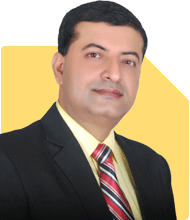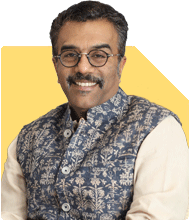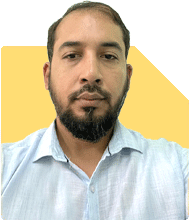Maxim Emmanuel | Answer |Ask -Follow
Soft Skills Trainer - Answered on Apr 25, 2024
An alumnus of the Xavier Institute of Management and Research, Mumbai, Maxim has over 30 years of experience in training young professionals and corporate organisations on how to improve soft skills and build interpersonal relationships through effective communication.
He also works with students and job aspirants offering career guidance, preparing them for job interviews and group discussions and teaching them how to make effective presentations.... more

What should I do after Btec Mechanical engineering having backlog but have diploma in mechanical engineering
In the meanwhile with your Dip. Mech Eng you must design an attractive not more than 2 page resume, go to mech, auto, aviation & allied eng company websites go to careers ..look for vacancies apply for a job.
Bingo.. You will be employed!?
You may like to see similar questions and answers below
Shekhar Kumar | Answer |Ask -Follow
Leadership, HR Expert - Answered on Apr 26, 2024
Chocko Valliappa |514 Answers |Ask -Follow
Tech Entrepreneur, Educationist - Answered on Jul 13, 2024
Aasif Ahmed Khan | Answer |Ask -Follow
Tech Career Expert - Answered on Jul 24, 2024
Nayagam P P |10233 Answers |Ask -Follow
Career Counsellor - Answered on Nov 26, 2024
Dr Nagarajan J S K |2270 Answers |Ask -Follow
NEET, Medical, Pharmacy Careers - Answered on Aug 13, 2025
Dr Nagarajan J S K |2270 Answers |Ask -Follow
NEET, Medical, Pharmacy Careers - Answered on Aug 13, 2025
Nayagam P P |10233 Answers |Ask -Follow
Career Counsellor - Answered on Aug 13, 2025
Nayagam P P |10233 Answers |Ask -Follow
Career Counsellor - Answered on Aug 13, 2025
Nayagam P P |10233 Answers |Ask -Follow
Career Counsellor - Answered on Aug 13, 2025
Dr Nagarajan J S K |2270 Answers |Ask -Follow
NEET, Medical, Pharmacy Careers - Answered on Aug 13, 2025
Nayagam P P |10233 Answers |Ask -Follow
Career Counsellor - Answered on Aug 13, 2025
Nayagam P P |10233 Answers |Ask -Follow
Career Counsellor - Answered on Aug 13, 2025
Dr Nagarajan J S K |2270 Answers |Ask -Follow
NEET, Medical, Pharmacy Careers - Answered on Aug 13, 2025
Radheshyam Zanwar |6312 Answers |Ask -Follow
MHT-CET, IIT-JEE, NEET-UG Expert - Answered on Aug 13, 2025





















